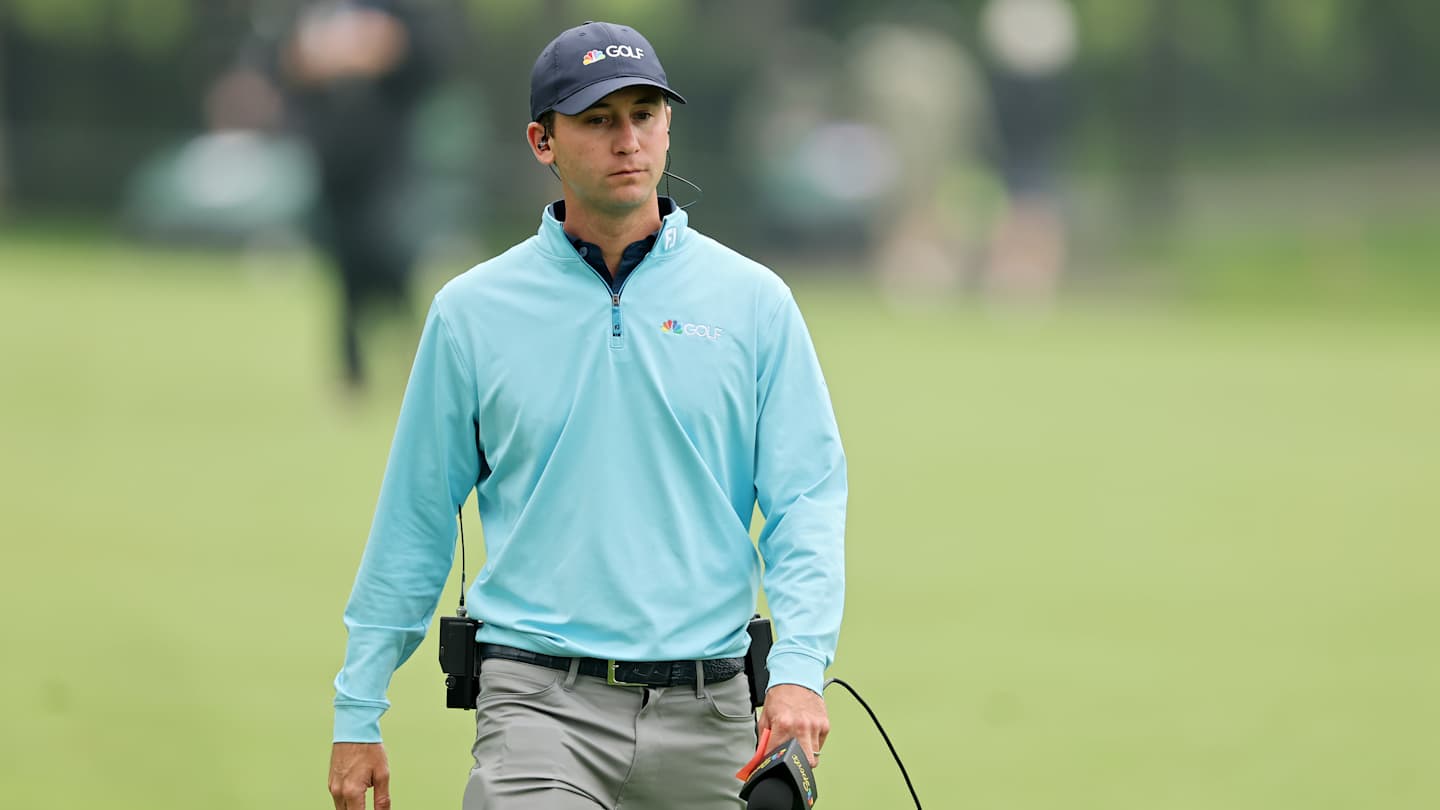Smylie Kaufman, the Golf Channel/NBC on-course reporter, found himself in a rather awkward situation during the second round of the British Open. A hot mic picked up an audible F-bomb, leading to an on-air apology and a quick response from Kaufman himself. This incident highlights the ever-present challenge of live broadcasting and the importance of mic awareness.
The episode occurred while Jon Rahm was lining up a birdie putt on the 14th hole. Kaufman’s colorful reaction, triggered by a headphone issue, quickly spread across social media, turning a technical glitch into a trending topic. The incident underscores the unpredictable nature of live television and the potential for unexpected moments to capture public attention. This article delves into the details of the incident, the apologies issued, and the broader implications for broadcast professionals.
The Unforeseen F-Bomb
As viewers tuned in to watch the second round of the British Open, an unexpected moment occurred during the USA Network broadcast. While Smylie Kaufman was providing on-course commentary as Jon Rahm lined up a birdie putt on the 14th hole, the broadcast picked up an expletive. “I can understand why this is one of the more difficult holes today,” Kaufman began, before a sudden pause and the unmistakable sound of, “What the f—.”
The moment quickly gained traction online, with viewers sharing clips of the incident across social media platforms. The unexpected outburst caught many off guard, turning a seemingly routine broadcast into a viral sensation. The incident served as a stark reminder of the unpredictable nature of live television and the challenges of maintaining composure in a high-pressure environment.
Following the incident, NBC Sports quickly addressed the situation. Mike Tirico took to the air to explain the situation and offer an apology to viewers. “Earlier, we had some technical issues with our microphones,” Tirico explained. “When you come over here, our on-course reporter, sometimes the headsets don’t work the same way they do back home. Because of that, it led to some language getting through on the air that shouldn’t have gotten through. So we just want to take the time to apologize for that comment getting through back home.”
Smylie Kaufman’s Apology and Explanation
Recognizing the gravity of the situation, Smylie Kaufman wasted no time in addressing the incident. Shortly after the second round concluded, he took to social media to issue a formal apology and provide context for his outburst. “Well, I guess there’s a first for everything,” the 33-year-old began. “First off, I want to apologize for the audio blunder that happened today, to me on the [14th] hole. Heard a pop in my ear, went radio-silent, which signals typically for me that my mic is down, and clearly it wasn’t.”
Kaufman’s explanation shed light on the technical difficulties that led to the on-air mishap. He explained that a sudden “pop” in his ear led him to believe that his microphone had been deactivated. This misinterpretation prompted his unguarded reaction, which was unfortunately broadcast to the viewing audience. His swift apology demonstrated his awareness of the situation and his commitment to maintaining professionalism.
He continued, “So I want to apologize for what happened to the team, those listening, and of course, gonna move past this one, and definitely will not happen again and look forward to a great weekend.” His message conveyed sincerity and a determination to learn from the experience. By taking ownership of the mistake and expressing remorse, Kaufman aimed to mitigate any potential damage to his reputation and maintain the trust of his audience.
The Ever-Present “Hot Mic”
The incident involving Smylie Kaufman serves as a crucial reminder for anyone involved in live broadcasting: the microphone is always hot. This principle underscores the need for constant vigilance and awareness, regardless of the perceived status of the equipment. Even when a microphone appears to be off, there is always a risk that it could be transmitting audio.
For aspiring on-air personalities, this lesson is particularly valuable. Maintaining a professional demeanor at all times is essential, as unguarded comments or reactions can easily be captured and broadcast to a wide audience. The ability to think before speaking and to remain composed under pressure are critical skills for success in the field of broadcasting.
The consequences of failing to recognize the “hot mic” can range from minor embarrassment to significant reputational damage. In today’s digital age, where clips can quickly go viral, it is more important than ever for broadcast professionals to exercise caution and maintain a high level of self-awareness. The Smylie Kaufman incident provides a cautionary tale and a valuable learning opportunity for anyone pursuing a career in broadcasting.
Key Takeaways and Final Thoughts
The Smylie Kaufman “F-bomb” incident serves as a valuable case study in the challenges and pitfalls of live broadcasting. The incident highlights the importance of mic awareness, the need for quick and sincere apologies, and the power of social media to amplify both positive and negative events. For broadcast professionals, the incident offers several key takeaways.
First, it reinforces the principle that the microphone is always hot, requiring constant vigilance and self-awareness. Second, it demonstrates the importance of taking ownership of mistakes and issuing prompt apologies to mitigate potential damage. Third, it underscores the need for broadcast professionals to be mindful of their online presence and reputation, as social media can quickly amplify and disseminate news.
Ultimately, the Smylie Kaufman incident is a reminder that even the most seasoned professionals are not immune to making mistakes. However, it is how one responds to those mistakes that truly defines their character and professionalism. By taking responsibility for his actions and issuing a sincere apology, Kaufman has demonstrated his commitment to upholding the standards of his profession and maintaining the trust of his audience. The incident serves as a valuable learning experience for anyone involved in live broadcasting, offering insights into the challenges, responsibilities, and rewards of the profession.

Leave a Reply